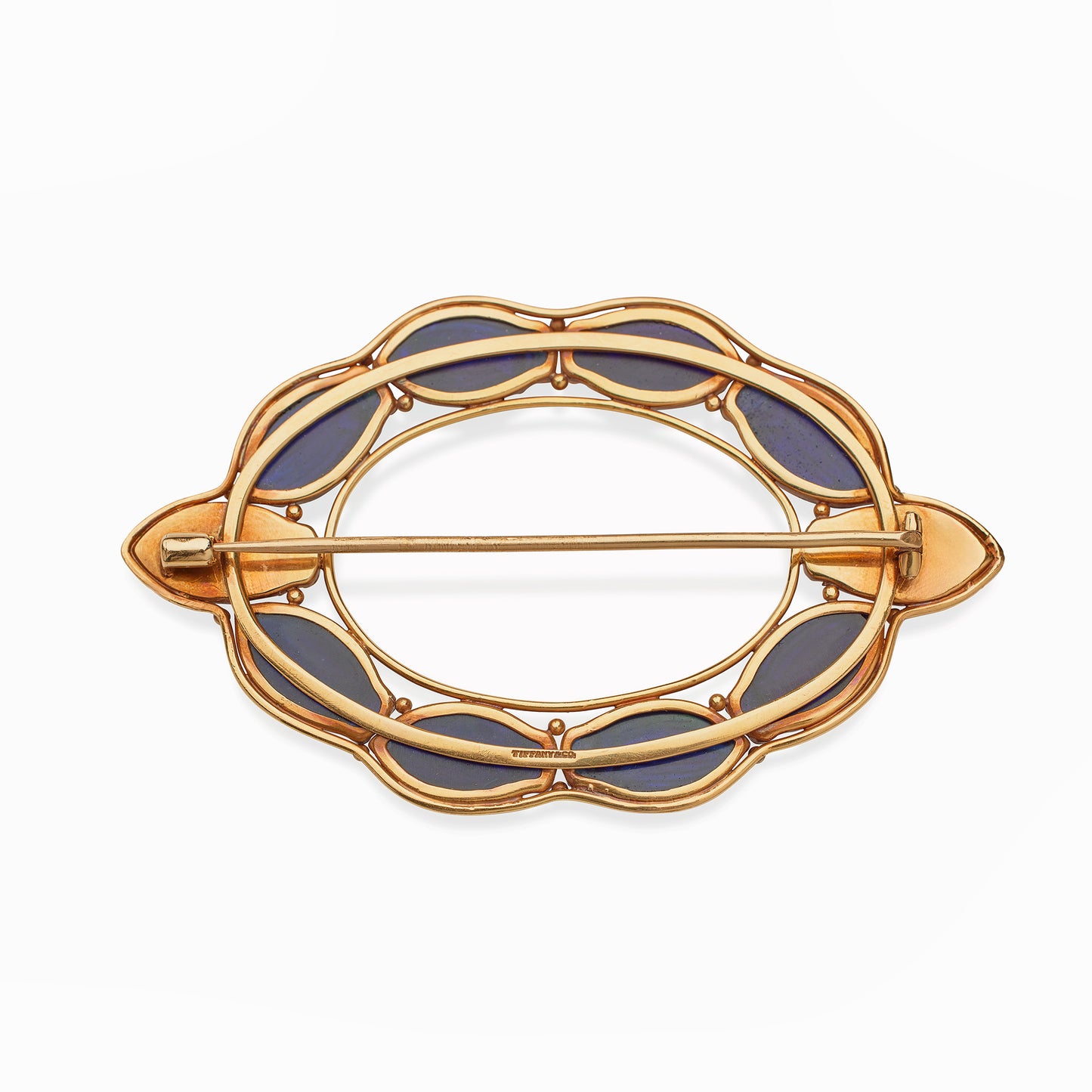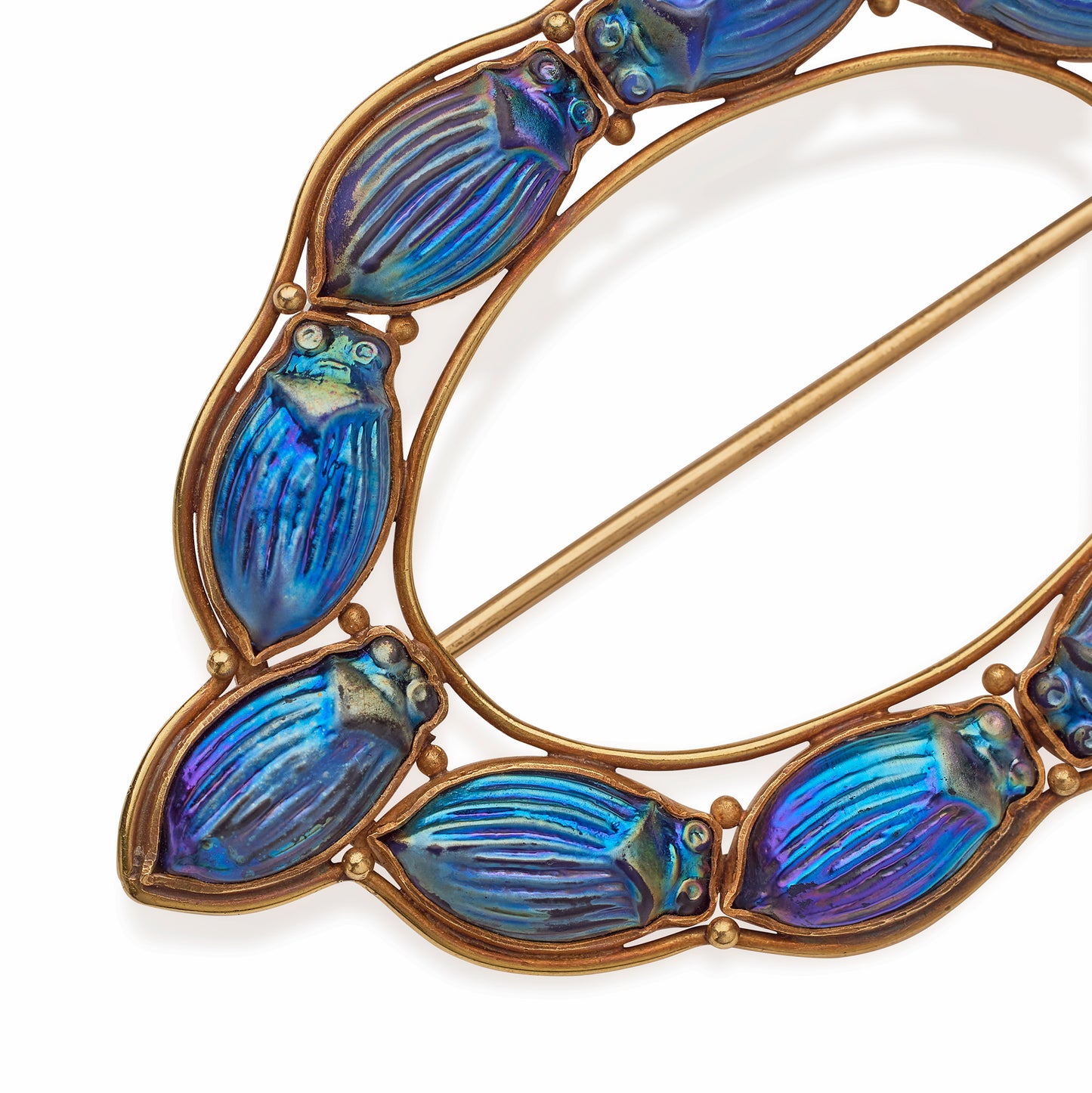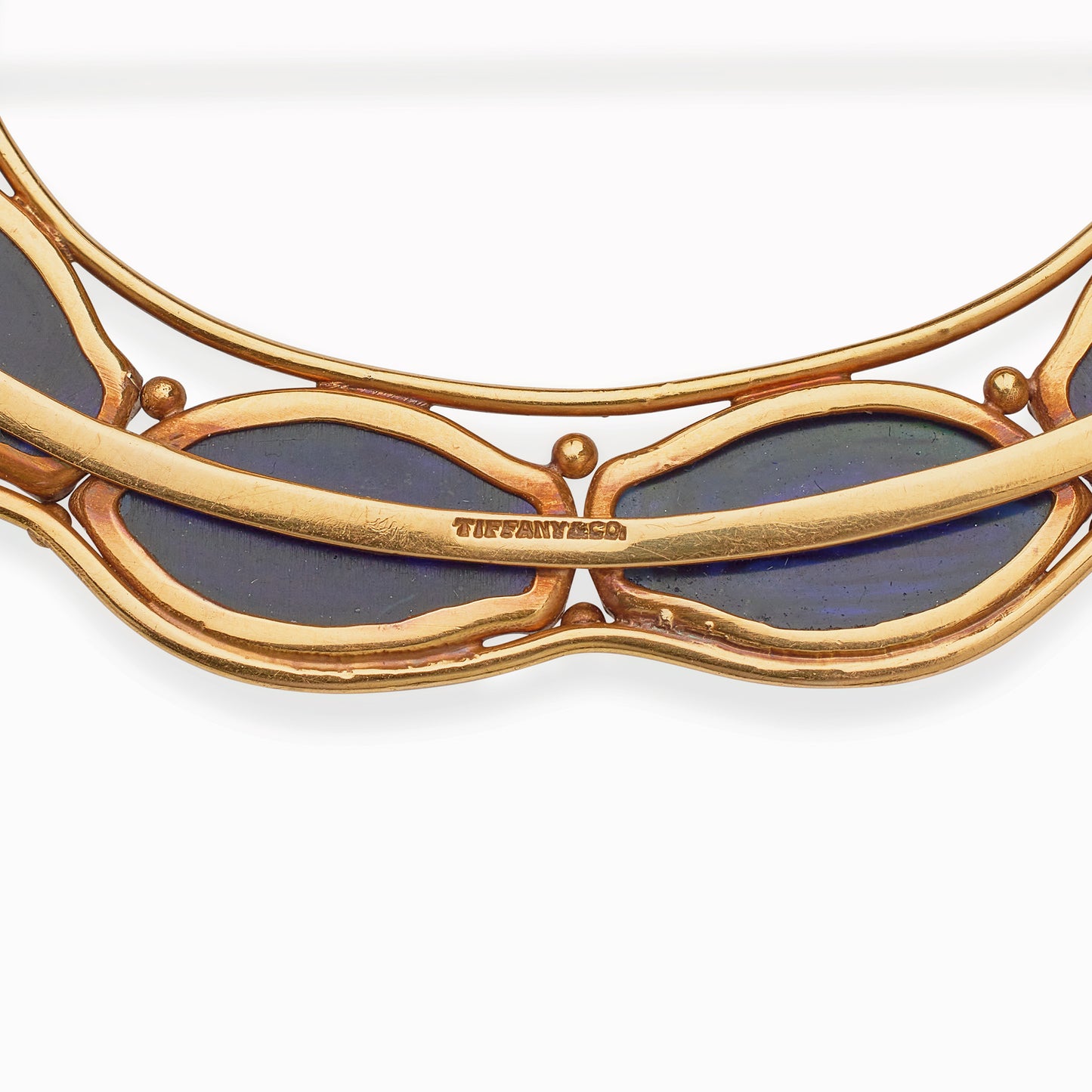Louis Comfort Tiffany for Tiffany & Co. Favrile Glass Scarab Brooch
Item #: BO-21184
Artist: Louis Comfort Tiffany for Tiffany & Co.
Country: United States
Circa: 1909
Dimensions: 1.75" length, 3" width
Materials: Favrile Glass; Gold; With signed box
Signed: Tiffany & Co., with scratched number, possibly A7820
Literature: Jewelry dating from the period 1909-1914 featuring iridescent glass scarabs is pictured in: Janet Zapata, The Jewelry and Enamels of Louis Comfort Tiffany, p. 103-105
Item #: BO-21184
Artist: Louis Comfort Tiffany for Tiffany & Co.
Country: United States
Circa: 1909
Dimensions: 1.75" length, 3" width
Materials: Favrile Glass; Gold; With signed box
Signed: Tiffany & Co., with scratched number, possibly A7820
Literature: Jewelry dating from the period 1909-1914 featuring iridescent glass scarabs is pictured in: Janet Zapata, The Jewelry and Enamels of Louis Comfort Tiffany, p. 103-105




















